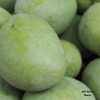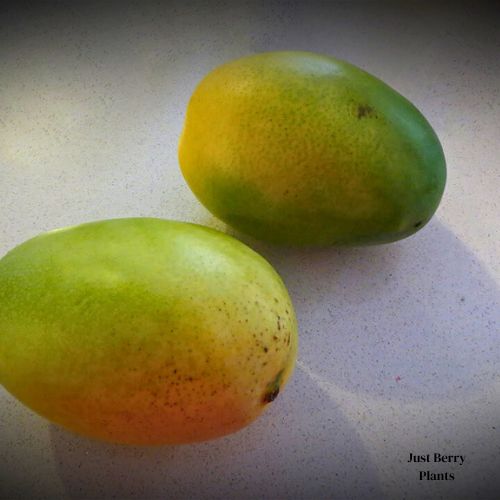Position
Keitt mango trees thrive in full sun, where they get at least 8 hours of direct sunlight daily. The morning sun is great for drying the tree off of any dew. Leave 6 to 8 metres around each tree to allow it to grow and spread.
Size
Depending on the conditions, this tree will usually reach between 3 and 5 metres in height, with a spread of 2 to 4 metres. For smaller areas, you can prune it down so that it doesn’t become too large.
Soil Type
This resilient tree grows well in various soil types as long as they are well-draining. It is only when the soil is too dense and becomes waterlogged that this tree suffers. An alkalinity of between 5.5 and 7.5 is best.
Mulch
Apply organic mulch to your nectarine tree all year round.
Use from 2 to 5 centimetres of pine bark mulch to protect the roots from UV damage and drying out. It retains moisture, and maintains an optimal pH. Do not let the mulch touch the plant stem, as it may cause infection or rot.
Watering
This fruit tree requires a moderate amount of watering. Soak the soil well to allow the water to reach right down to the deep tap roots. Then, allow it to dry completely (2.5 to 5 centimetres of the soil should be completely dry before watering it again). Stop watering the tree completely 2 months before flowering begins, then start again when the first mango fruits arrive.
Fertilising
A general-purpose fertiliser should be applied three times a year for the best results. Beware of over-fertilising your mango tree, as it will likely not produce many or any mangoes and flowers with too much fertiliser.
A rapid-release fertiliser with nitrogen can be given to your trees just before they flower. This will encourage the fruit and flowers to flourish. Just be careful not to over-fertilise them, as this will hinder the production of fruits and flowers.
Use our slow-release nitrogen-rich all plant fertiliser (which is excellent for citrus) Apply 1 teaspoon every 4-5 months
Pruning
This tree doesn’t necessarily have to be pruned, but removing dead and diseased limbs and keeping the canopy more open than cluttered is wise. Try to limit the tree to 3 main branches.
Harvesting
These are late-harvest mangoes, so they should be picked in the height of summer. One of the easiest ways to tell if it’s ready to be picked is to smell the stem. If it smells gorgeously fruity, it is ready.








